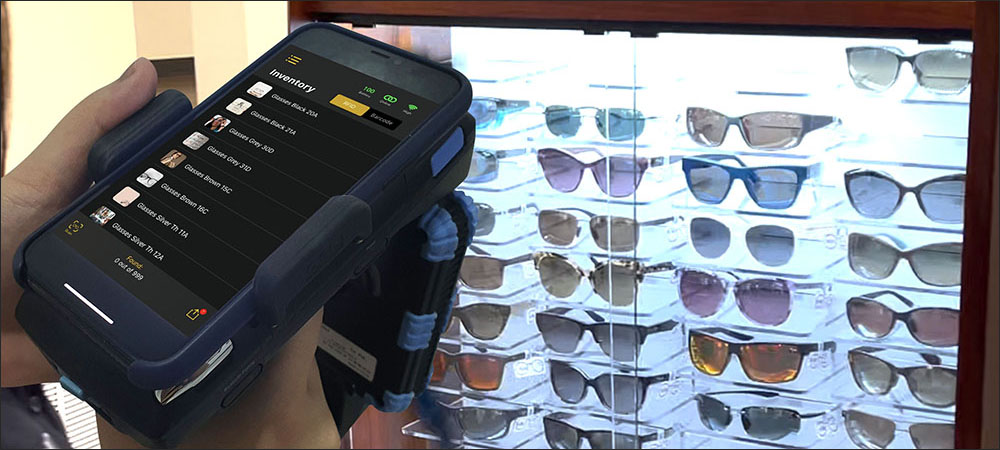RFID Journal LIVE! 2023 will feature end-user companies discussing RFID’s use in various industries, as well as exhibitors offering tagging solutions for multiple applications. To learn more, visit the event’s website.
Several years after releasing a radio frequency identification (RFID)-based solution to help optometrists manage display frames at their stores, Frame Source Group (FSG) is releasing a new version of the system that enables a more efficient way to order frames with lenses, and to ensure that display frames remain on the wall for customers (see RFID Brings Clarity to Eyewear Inventory). The system, known as Advanced Inventory Management System (A.I.M.S.) 2.0, combined integrated software, which changes the model for frame delivery directly to eyewear labs, with in-store RFID technology to track inventory levels. The solution is provided by technology company SimplyRFID.
Based in Addison, Texas, Frame Source Group provides eyewear products to approximately 1,600 retailers and optometrists. Its customers often sell hundreds or thousands of frames at their stores, but they have little understanding of the day-to-day stock counts of frames on hand, according to Greg Smith, FSG’s sales manager. Typically, when a customer purchases a set of eyeglass frames, those frames are taken from the display wall and sent to the lab, where lenses are cut to fit. In the meantime, the retailer or optometrist must restock the vacant display area with another set of eyewear.
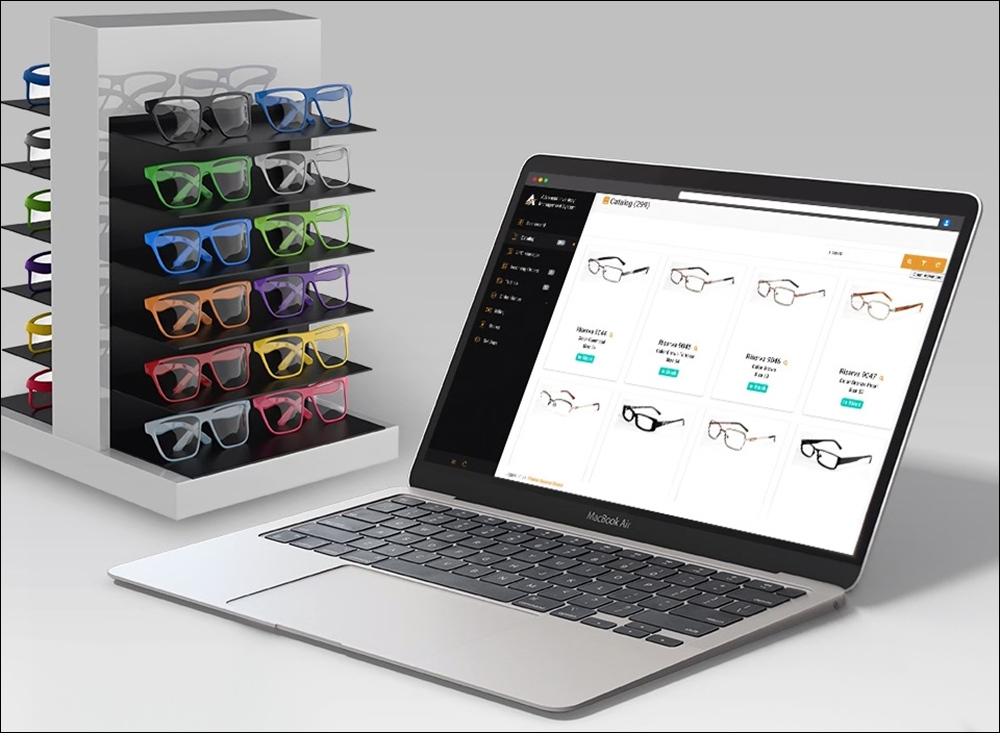
The Advanced Inventory Management System
Doctors that sell FSG’s products had been seeking a solution to some of these problems, Smith says. Thus, FSG developed the original A.I.M.S. eyewear-tracking solution with RFID functionality. Stores would apply passive UHF RFID tags to each frame, and they could conduct a daily count of the frames displayed on their walls or in their cabinets by reading the tags via handheld readers. The resulting data could then be managed on SimplyRFID’s Pogi cloud-based server.
Stores Struggle to Gain Value
Stores purchased the solution with a Convergence Systems Ltd. (CSL) CS108 handheld reader, which comes with a sled and a Bluetooth connection enabling users to link the device to an iOS-based smartphone, which then runs the A.I.M.S. app. BoingTech RFID tags were sent to the stores to be applied to the eyeglass frames, after which workers performed their daily inventory tag reads.
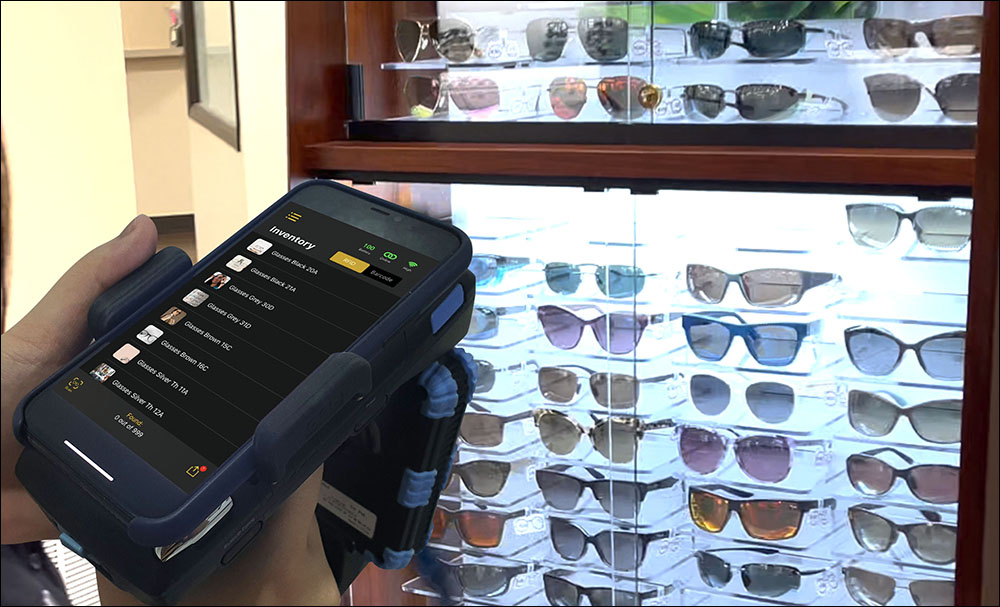
“It worked great at first,” Smith says. FSG received a regular e-mail showing the inventory counts conducted at each store with the RFID readers. “We could see when they did the scan,” he recalls, as soon as a tag was applied to a frame and its data was input into the system via a UPC barcode scan. SimplyRFID designed software to make it easier to use existing inventory data on the server in the event that a UPC barcode wasn’t available. Users would input the first few letters of a frame’s model name, then scroll through potential options and select the right product.
The average inventory counts started to change, though. Over time, Smith says, “We would watch those scans and they would do them in the morning, and then they would do them in the night.” Eventually, FSG and SimplyRFID found, such counts dwindled since optometrists did not place a priority on inventory counting. So they began to rethink the process. “Even though [the system] was giving them actionable data, the value just wasn’t there,” says Carl Brown, SimplyRFID’s president.
The frames sold fast and turnover volume was high, but the technology did not resolve some questions, such as where the frames were during the ordering, shipping and receiving processes as they were sent to the lab for lenses and then returned. Thus, SimplyRFID developed an entirely new model that it calls A.I.M.S. 2.0. The RFID tags are still applied to the frames, the company explains, but the inventory counts are now supported by a new management system.
Rethinking RFID-based Data
With A.I.M.S. 2.0, when a customer selects and purchases a frame, the display sample remains on the wall. The store uses the A.I.M.S. system to place an order for that frame from a participating brand sold through FSG, and the frame is sent directly to the lens manufacturer. The optometrist forwards the prescription for the glasses to the lens manufacturer as well. Users can then view the order’s status in the software.
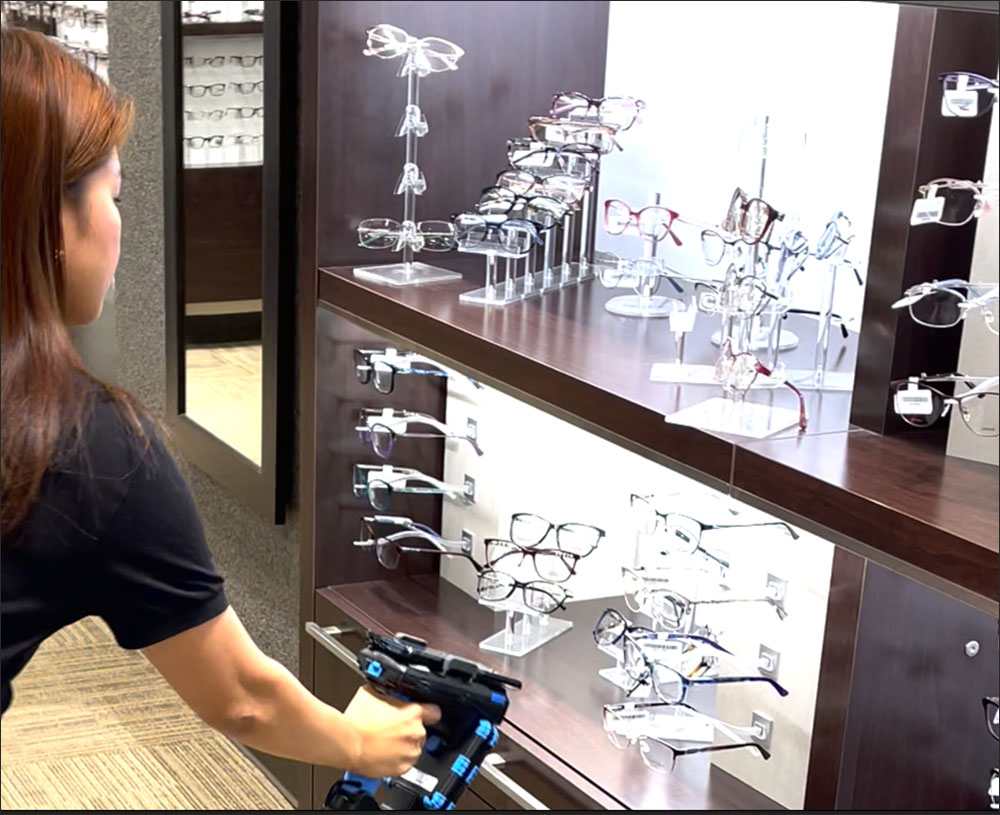
The result, according to FSG, is that frames are processed more quickly, display frames do not leave the store and order management is more efficient. In addition, the software means fewer steps for sales personnel, who no longer have to hand-write order information and ship frames to the lens manufacturing lab. By continuing to read the RFID tags on the display frames, the store can prevent shrinkage, while FSG and the frame brands can view which frames are selling well, which are not and which may need to be replaced by more popular styles.
According to Smith, the system has been in place and been piloted by several stores for the past two months or so. FSG also offers what it calls Valet Service, by which the company or the frame brand tags frames with RFID labels before sending them to the store. Alternatively, FSG can supply the vendors with Zebra Technologies RFID label printers so they can tag their own products before sending them.
Selling More Frames that Customers Prefer
Frame Source Group has signed up 17 vendors so far, including Luxottica, which sells a large percentage of eyewear frame brands, to participate in the A.I.M.S. 2.0 program. There are more than 80,000 frames currently available to purchase from these vendors’ catalogs, and SimplyRFID has built each frame’s stock-keeping unit data into the software, including the frame’s UPC. Brown predicts that enhancing the delivery systems and software, along with the existing RFID technology, will “drive a more dynamic model that’s business-oriented versus sales-oriented.”
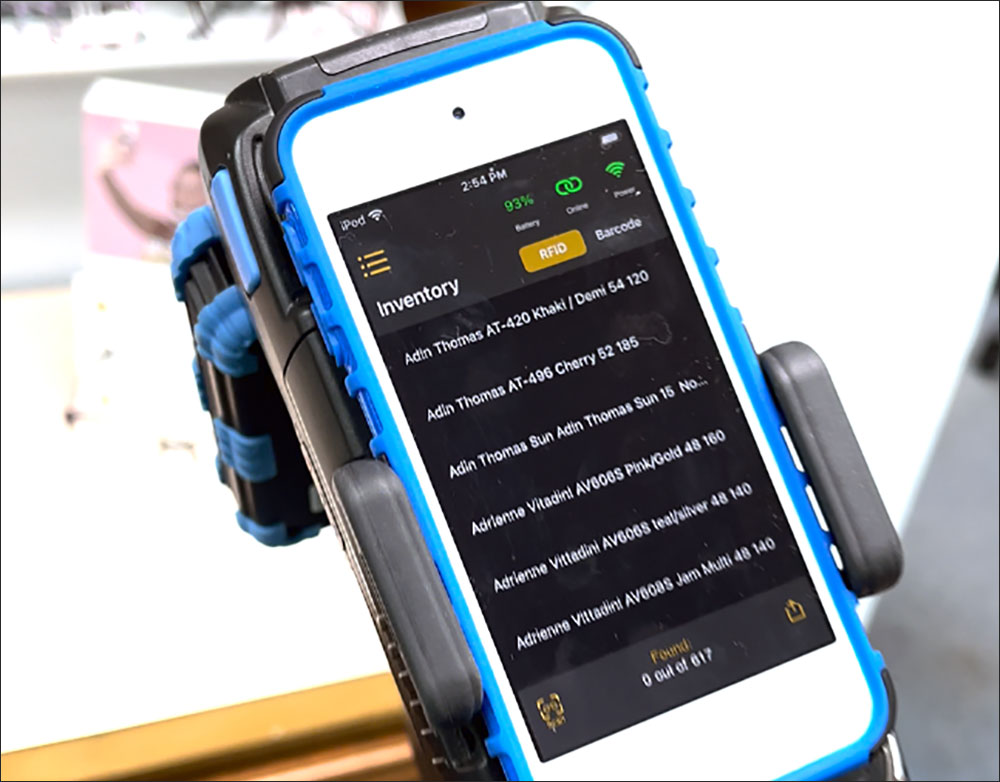
The solution costs $3,000, including a Zebra printer, pre-encoded rolls of RFID labels and a monthly $199 service charge for the data. The full solution includes the handheld CS108 reader, which has a range of up to 15 meters (49 feet), is ruggedized for drops of up to 1.2 meters (4 feet), and works with Android-based smartphones or iPhones. The readers are designed for durability, ease of use and reliability, says Rod Saunders, CSL’s business-development manager. They are built to be affordable, he adds, and are not experiencing the supply chain issues some reader companies have reported.
BoingTech’s UHF RFID inlay is based on an existing product but was modified to meet the application’s needs, says Dimitri Desmons, the company’s VP of sales and marketing. “We made some samples prototypes,” he states, “and they changed the spec a couple of times,” until the proper form factor was completed. The finished product is a two-layer label that can be attached to the frames’ packaging. When the frames arrive at the store, the butterfly-shaped inlay is peeled off a lower layer and folded over the frame. It is then attached so that it hangs from that frame with a pre-printed logo.
In the long run, Smith predicts frame brands will apply RFID tags to every product they make, to help them better manage the frames throughout the supply chain. He anticipates that there may be benefits for tracking contact lenses with RFID technology as well. For instance, tags could be affixed to shelf compartments in which each prescription strength of contact lens is stored. If a prescription were to sell out, a foil cover could be slipped away from the front of the tag. Then, when the tags were read via an RFID reader, the software could trigger a reorder of that specific prescription strength.
Key Takeaways:
- Updated I.M.S. 2.0 features for eyeglass frame management merge software and pre-order processing with existing RFID tracking of sample frames.
- Several companies have adopted the solution with the added software service and are shortening the time of lens processing, while ensuring they never run out of frames at their stores.

